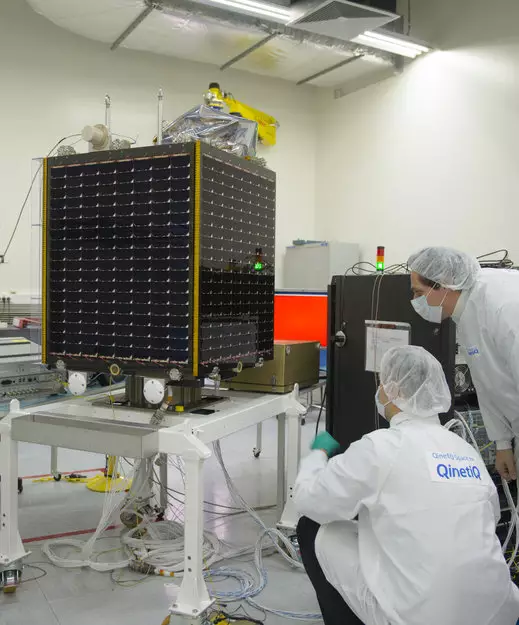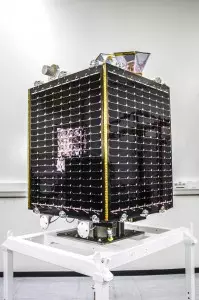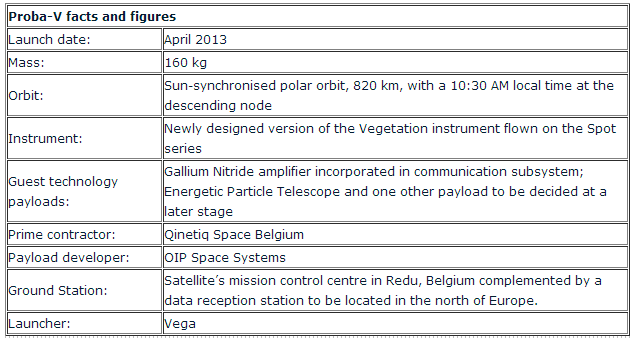It looks like a small ‘Borg-Cube’, but its actually a satellite. Completely human in origin.
Its mission is to scan the earths vegetation and much more.
The ‘V’ in its name stands for Vegetation: Proba-V will fly a reduced-mass version of the Vegetation instrument currently on board the Spot satellites to provide a daily overview of global vegetation growth.
ESA’s microsatellite is now fully assembled and midway through testing to ensure it is fully spaceworthy. The miniature Earth-observer, designed to chart global vegetation every two days, will be launched in April.

Building it was a complex operation. Although smaller than a cubic metre, the satellites carries a wide-angle telescope for its main Earth-monitoring instrument, a pair of radiation sensors, a fibre optic connector experiment, a prototype radio transmitter based on the semiconductor gallium nitride, and a test receiver to track aircraft in flight all around the globe.
..the small satellite is flying a miniaturised version of the Vegetation sensor on France’s full-sized Spot-5 satellite, intended to extend its nearly 15-year continuous record of observations – dating back to the previous Spot-4 mission, launched in 1998.
There are more than 10 000 registered users of Vegetation products worldwide, and the data have contributed to hundreds of scientific papers.
Despite being much smaller than the original Vegetation instrument, Proba-V’s version observes compatible spectral bands while delivering a spatial resolution three times sharper.
Among other firsts for the mission, Proba-V will fly a radio amplifier based on gallium nitride. Often described as the most promising semiconductor since silicon, gallium nitride offers higher power levels and radiation resistance.
Proba-V will also be the world’s first space mission to detect Automatic Dependent Surveillance Broadcast signals from aircraft, building up a global overview of air traffic.

Click pic to enlarge

Credit: ESA









and the data have contributed to hundreds of scientific papers.